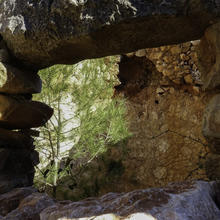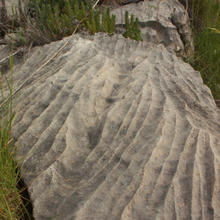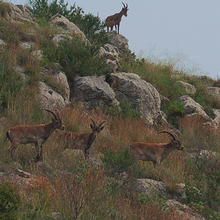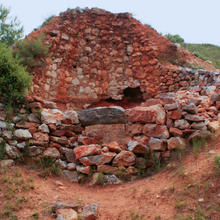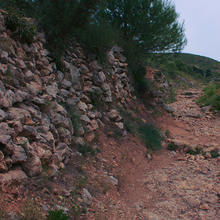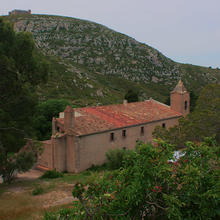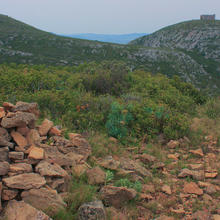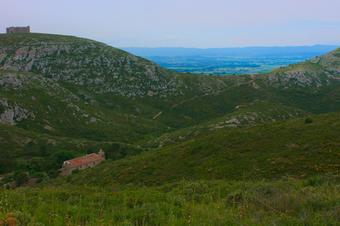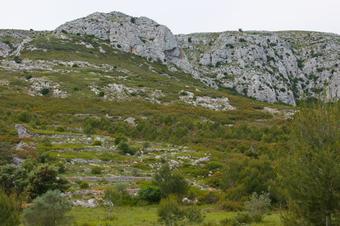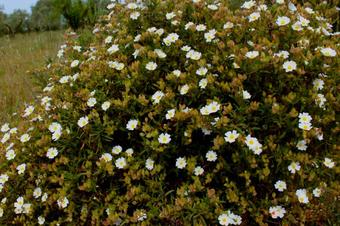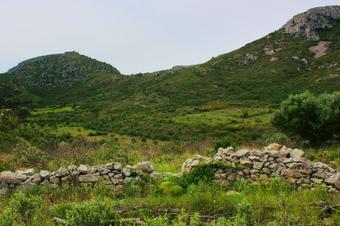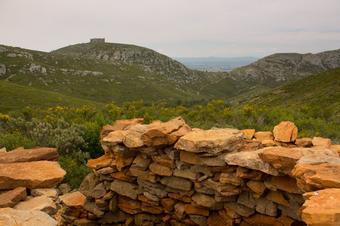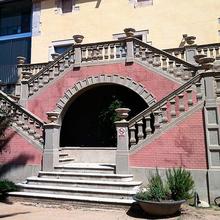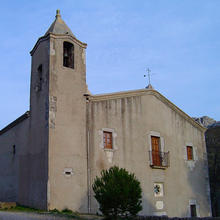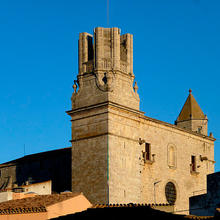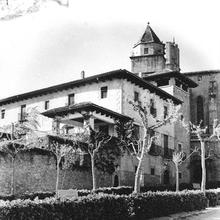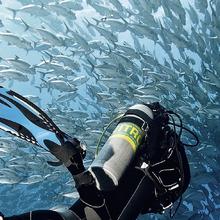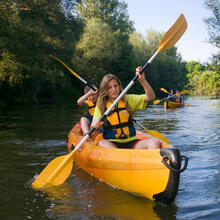Introduction
Ethnological heritage in the Santa Caterina Valley
This route takes you into the Montgrí Massif through the Vall de Santa Caterina, revealing its natural and architectural heritage. In among Mediterranean vegetation, you can see numerous dry-stone structures like old terraces, huts and several lime furnaces, evidence of use of the natural resources of the Montgrí Massif in the past. You can also visit the Hermitage of Santa Caterina and enjoy the panoramic views from the Puig de Carroig.
We recommend the Local Natura App to do this route. Download it for free here:
Apple store Google Play
-
TypologyAnti-clockwise circular
-
DifficultyMedian
-
Duration4 hours
-
Slope320.00 meters
-
Distance11.00 km
-
ThemeEnvironmentLandscaping
-
ActivityBy foot
-
Rating
Slope graph

Description
Ethnological heritage in the Santa Caterina Valley
The route starts by the Church of Sant Joan de Bellcaire and straight away heads through the Plaça dels Comtes d’Empúries where Bellcaire Castle is located. The route goes past an old mill and a reservoir before leaving the streets of the village and heading along flat rocky paths, which skirt fields of cereals and olive trees on the way to the Montgrí Massif.
The route dives into a Mediterranean landscape where kermes oak, Montpellier cistus and spiny broom predominate, along with some Aleppo pines and holm oaks. The kermes oak and cistus vegetation is encouraged by the fires that have recently happened in the area as well as the abandonment of old crops established on dry-stone terraces. Throughout this route, you will see dry-stone huts and various lime furnaces such as, for example, the Forn de Santa Caterina, at the end of the valley of the same name. This is a good chance to enjoy the excellent view of the interior of the Montgrí Massif, with the Castle of Montgrí in the background and Puig Rodó to your right. As for the vegetation, grey-leaved cistus gradually takes over from Montpellier cistus and other species like mastic appear.
You join the trail from Coll de Santa Caterina, with stretches of well-preserved paving, until you come to the Hermitage of Santa Caterina, a key part of the heritage of the Montgrí. Next, the route climbs to the Puig de Carroig, from where you can see all of the mountain range, much of the Empordà, the Gulf of Roses and, on a clear day, the Pyrenees.
Finally, you follow the ridge, where garrigue with cistuses increases the diversity. On the way back you can easily see how humankind has adapted to the environment and has made the most of its resources, clearly differentiated between the fertile plain and the hard and dry mountains.
Tips
Route
- The route runs along narrow paths, some between abundant vegetation which can make route-finding difficult.
- Try not to stray from the paths as you are in protected areas of the Natural Park.
- The route climbs gently to Santa Caterina, with a slightly steeper climb to Puig de Carroig. No major accumulated climbing.
Water
- Take water with you. There are no fountains.
Precautions
- Respect the surroundings; you are in a Natural Park. Avoid the middle of the day in the summer and protect yourself well from the sun.
- Parts of the route have plants with thorns, and so wearing long trousers is highly recommended to avoid scratches
Weather
- Avoid days with strong winds or very hot days.
Terrain
- Rocky.
Equipment
- Comfortable, hard-wearing footwear.
- Clothing to protect you if it is windy. The return leg is on a very exposed ridge.
- Sun protection: cream, hat, sunglasses.
- Camera and binoculars.



